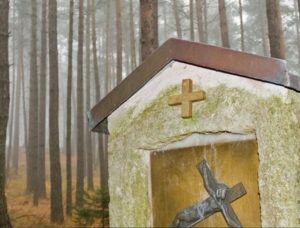 By Peter Jesserer Smith, National Catholic Register
By Peter Jesserer Smith, National Catholic Register
A new U.N. report on biodiversity loss is propelling the Church to move forward on Benedict XVI and Francis’ call to action to care for creation.
But the sober assessment also provides new impetus for Catholics to put into practice the care for creation envisioned by Pope Francis’ 2015 encyclical on the environment, Laudato Si (Care for Our Common Home), that should allow human beings and the natural world to thrive together.
“We are eroding the very foundations of our economies, livelihoods, food security, health and quality of life worldwide,” stated Sir Robert Watson, the chairman of The Intergovernmental Science-Policy Platform on Biodiversity and Ecosystem Services (IPBES), which released its global consensus report after the seventh plenary session concluded May 4 in Paris. He added that there is another path, “only if we start now at every level, from local to global.”
…
Backyard Biodiversity
Getting to a culture that loves and restores global biodiversity is a project that begins literally in people’s backyards, explained Bill Jacobs, executive director of the St. Kateri Conservation Center and an ecologist with 25 years’ experience.
Jacobs, who was the interim director of the St. Kateri Tekakwitha Shrine in Fonda, New York, said God must be part of the conversation on biodiversity, because the key to restoring biodiversity is “restoring relationships” between humanity and creation and the God who created all.
The St. Kateri Conservation Center has a “St. Kateri Habitat” program that invites people to restore natural habitats at their homes, in their parishes and in their local communities. Planting native trees and plants in backyards and roadsides can make “little oases” to support biodiversity.
Jacobs said the more people support biodiversity in their own backyards, the more it changes their attitude toward other actions.
Families that reduce their lawns by giving more space to wildflowers can also reduce the amount of fertilizer and weed killer, which takes a toll on native plants and insects, and provide pollination habitats for bees and other insects.
“It seems like a small thing, but it gets people thinking,” he said.
Farms, he added, can mitigate fertilizer runoff through pursuing best land management practices, using a minimum amount of organic fertilizers as needed, and creating wildlife habitats that can catch run-off before it enters into waterways.
Fertilizer runoff is a major challenge to biodiversity, Jacobs explained. Many lakes and waterways are seeing toxic algae blooms due to fertilizer runoff. This greatly weakens an ecosystem and can wipe out native species once invasive species are introduced (sometimes by people who buy exotic pets and then release them into the wild when they get tired of them).
Officials in the Great Lakes are panicked about the expansion of Asian carp into the Great Lakes, which they fear could wipe out a large number of native species still rebounding in the wake of efforts to clean up the industrial pollution of the lakes. And the ecosystem is seeing toxic algae blooms, harmful to human beings and wildlife, as a result of raw sewage and fertilizer flowing from Ohio’s factory-farms into Lake Erie.
Working With Indigenous Peoples
St. Kateri Conservation Center calls itself a “faith-based land trust.” It is working with religious orders and landowners to put what it calls “conservation easements” into the deeds to their land, so they can remain preserved habitats. It also provides a way to make sure the land retains its religious character, such as any shrines or statues built on the landscape.
But preserving or restoring biodiversity also presents an opportunity to work with indigenous peoples. The St. Kateri Conservation Center is looking to enter into strategic partnerships with Native American communities and nations. Duke University’s Pimm also emphasized that working with biodiversity required the involvement of native peoples who have several thousand years of experience-based wisdom in maintaining habitats they depend on for their own thriving.
The USCCB’s Simmonds agreed the Church should work with indigenous peoples, as Pope Francis emphasized, “for the sake of the forests and biodiversity there, because they are the best custodians.”
The U.S. federal park model, he indicated, envisions “pristine wilderness” as having no people in it. Native people in the U.S., who formerly inhabited and took care of these lands, are left with reservations that have too small a land-base to sustain traditional lifestyles and land management. Simmonds explained this is in contrast to South America, where federal parks are vast tracts of land cared for and maintained by indigenous people, living their traditional way of life.
But researchers are recognizing that the indigenous people have a vital role in maintaining forest biodiversity. In the face of multiple horrific wildfires in the Western U.S. and California, researchers are studying how Native American peoples managed forests, preventing the monster wildfires that would otherwise have wiped out their communities as well as wildlife.
For the U.S. Church, following the advice of Pope Francis, working with native nations and communities may not only help heal historic injustices, but also prove to be the linchpin to care for creation effectively.
“Look, if we want to protect the forests, then we have to really protect and allow indigenous peoples to live their lifestyle — that’s the best way to do this,” Simmonds said. “And they can teach us in our superdeveloped culture how to live in harmony with nature. There are so many lessons we can learn.”
